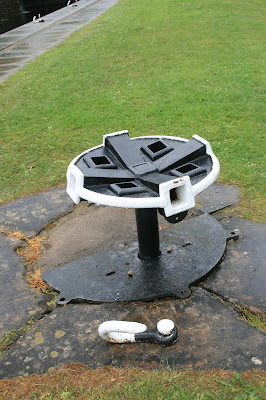We have toured Scotland before, but not on the scale of our recent journey which took us up the East Coast to Wick, along the North Coast to Durness and then back through the Western Highlands. It was clear that along the way we would see some canal related features. Having visited the Falkirk Wheel before, we gave that a miss this time but we couldn't miss the Caledonian Canal, particularly as we were staying close by on one of our stops.
Telford's canal runs from near Fort William to Inverness, some and incorporate several major lochs along the way, including Loch Ness and some twenty-nine locks(!) including the mighty eight flight of Neptune's Staircase at Banavie near Fort William. About one-third of the 62 miles of the Caledonian is man-made. Being a ship canal everything about the navigation is on a large-scale. For those unfamiliar with the scale of the Caledonian, the locks are about the scale of those found on the River Weaver.
Converted trawler Fear a'Bhata
At the top of the flight at Neptune's Staircase at Banavie we found a converted trawler Fear a'Bhata moored up. The owner, Donald, was on board and after some discussion he invited us on board. We had a great chat about the boat and his plans. It appears that this 1960's boat has been converted to tourist trips and will soon be operating through the Hebrides. The generous cabin was very well engineered and has lots of room for passengers because the mizzen mast is mounted off the roof. It looks like a great and well thought out project.
Trip boat Cruiser taking a group from Gairlochy to Banavie
As we left the top lock at Banavie the trip boat arrived and started disembarking passengers into a coach. They had to dodge the showers.
40 ft wide locks
Capstan that was formerly used to operate the gates
Company house ("Telford House") at Banavie
"Telford's house" at Gairlochy
Moorings at Gairlochy
Bridge over the canal at Gairlochy
Interpretation Board at Gairlochy Bridge
At the bridge in Gairlochy there is an interpretation board detailing how the first commando units used to march from Spean Bridge where they arrived by train and marched to the Achnacary Castle for their initial training. At Spean Bridge there is the striking and touching Commando Memorial.
Commando Memorial at Spean Bridge
We passed by the south-western end of the Caledonian Canal on the train from Fort William to Mallaig - the West Highland Line. From the train you can see where the canal enters Loch Eil at Corpach. Again there is a lighthouse.
Corpach Lighthouse and canal entrance
Swing road bridge at Banavie from the West Highland Railway
I can recommend a visit to the Caledonian if you are in the area, particularly if you are enthusiast for Telford. The paperback Caledoninan Canal by Sandy Cameron is an excellent historical account of this great engineering enterprise and is well illustrated. Its now my bedside reading.













